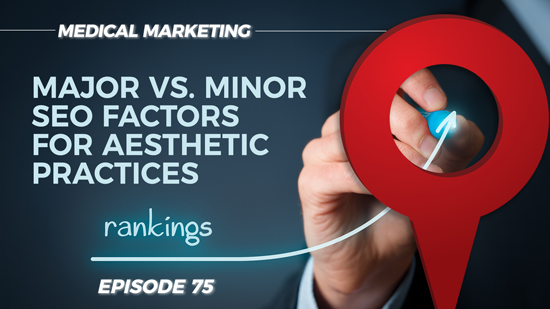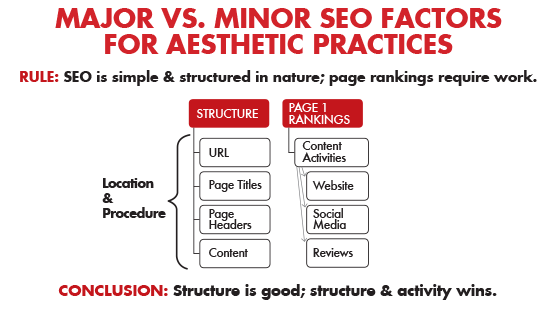Rule: SEO is simple and structured in nature; page one rankings require work.
Page structure and site structure are relatively simple. These two factors are what it takes for your content to be reviewed by the search engine. What allows you to rank on page one and drive revenue higher than organic SEO is creating content, which is work on the part of the practice. So, it’s important to be prepared to do this.
Here is a chart to help you organize your SEO considerations into major (structure) and minor (page one rankings) considerations:
| Structure – Include Location + Procedure | Page One Rankings |
|
|
SEO structure today is easy to follow in that, as long as you include your location and relevant procedure in each aspect of your website structure, you will be properly evaluated by search engines.
- URL structure—What is the address of your website, and how is each page set up so that consumers can get to the most important parts of your business? The search engine will act like a consumer as it attempts to navigate your site. Keep things straightforward and easy to find.
- Page Title—What is the page title? Does the page title include the location and the procedure that is most important to that page? It should.
- Page Headers—Include location and procedure in the page headers.
- Content—Once again, you have the opportunity (and, for quality SEO, the responsibility to yourself and your practice) to include location and procedure.
Achieving page one rankings will require content activity. These days, search engines understand that engagement with a business is a better determination of why they should get good rankings. The good news is that you have the power to influence this.
By regularly updating your website with blogs and before and after photos, becoming more active on social media, and getting consumer reviews on a continuous basis, you’ll demonstrate content activity that search engines will favor.
Conclusion: Structure is good; combined, structure and activity wins.

















